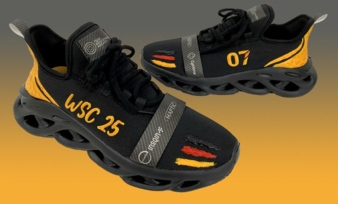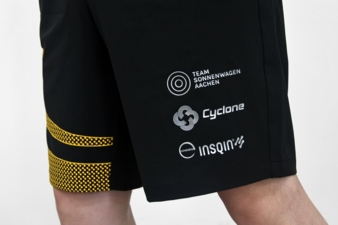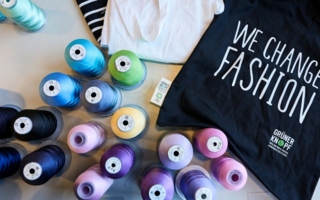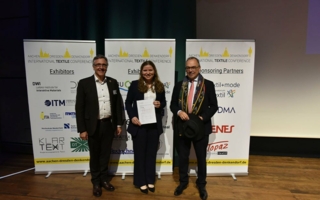22/08/2025 – Sustainable sportswear — auf Deutsch lesen
Recycled high-tech textiles for Team Sonnenwagen
Reducing the carbon footprint has become a driving force in the textile industry. However, this is particularly challenging in the manufacture of sportswear, as the performance of the materials must not be compromised.
A collaboration between Covestro and Huafeng shows how this can be achieved by developing more sustainable sportswear for Team Sonnenwagen's participation in the 2025 Bridgestone World Solar Challenge.
Environmentally friendly solutions with “rPET” yarns and solar power
Around 50 university teams will compete in this challenging 3,022 km solar race across Australia (24-31 August 2025) with their solar-powered vehicles. The Sonnenwagen team from RWTH Aachen University and FH Aachen University of Applied Sciences will wear Huafeng sportswear, reflecting their commitment to sustainability. The more sustainable innovation includes shoe uppers made from 100% recycled polyester (rPET) yarns from Cyclone, Huafeng's yarn partner. The yarn was made from PET bottles collected in Chinese provinces. This year's lightweight design of the shoe upper largely dispenses with lining material, reducing polyester consumption by 30% and improving material efficiency. The shorts and trousers are mainly made of “rPET”, with a small amount of elastic yarn for increased comfort.
The production process for “rPET” yarns involves several measures that contribute to further improving the sustainability of the fabric. The textiles are manufactured on modern knitting machines that are powered 50% by solar energy generated on the factory roof. Cyclone uses a special spin-dyeing technique for its “rPET” yarns. Compared to conventional dyeing techniques, this reduces energy consumption by 57%, water consumption by 77% and CO2 emissions by 51%.*
Sustainable finishing with bio-based PU binders
Huafeng's haptic printing paste allows shoes to be customised. The trousers were screen printed. The ink formulation contains bio-based PU binders from Covestro, meaning that the final printing paste consists of approximately 50% bio-based material. The Impranil CQ DLS/1 dispersion has a 38% lower carbon footprint compared to standard Impranil types.
This collaboration demonstrates how innovative materials and processes can significantly reduce environmental impact while maintaining the performance requirements of sportswear. By combining recycled polyester yarns, energy-efficient production and the use of partially bio-based binders, Huafeng has created sportswear that reflects Team Sonnenwagen's mission for more sustainable mobility. It demonstrates how sustainability in the textile industry can be improved without compromising on quality or performance.
*SGS report 2021 (Cyclone)
**according to internal calculations





